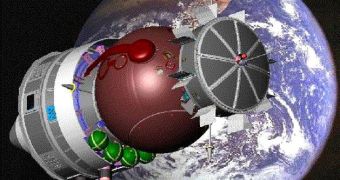About four years ago, a scientific experiment meant to assess how different liquids mix with each other flew around the planet on an unmanned spacecraft. Now the results are finally in, and European researchers are able to improve their knowledge on this delicate subject.
Much of the data on how fluids mix – that science now takes for granted – were produced by famed physicist Albert Einstein. Since then, few studies have been focused on thoroughly studying this intricate and essential area of physics.
But years ago, some experts proposed that observing how fluids mix would become a lot easier if the constant pull of gravity were to be removed from the equation. As such, a mixing experiment was launched aboard the Foton-M3 spacecraft.
The vehicle, which was operated by the European Space Agency (ESA), flew around the planet for about 12 days, carrying no less than 43 technological and scientific experiments. The flight took place back in 2007.
Though some of the data produced by these experiments were immediately available to scientists, other portions of the readings – such as the ones produced by the Gradflex experiment – became available only after a period of time.
The purpose of the suitcase-sized experiment was to analyze the large fluctuations that develop when two liquids move into each other. These fluctuations consist of localized motions that contribute to the mixing process.
“The most striking result [Gradflex produced] is that fluctuations of all sizes are present, hinting at the ‘fractal’ nature of a diffusion front. There are many fractals in nature, from clouds to snow flakes, all with extremely complex but fascinating shapes,” an ESA press release explains.
“When magnified, any portion of a fractal looks similar to the whole of it. The finding is interesting because it challenges the accepted vision of diffusion as a smooth mixing of fluids or a smooth diffusion of heat,” the statement adds.
“Since a large fraction of physics and biology experiments in space rely on modeling diffusion as a smooth mixing process, it is important to realize that diffusive processes are not as smooth as they might seem,” the release concludes.

 14 DAY TRIAL //
14 DAY TRIAL //